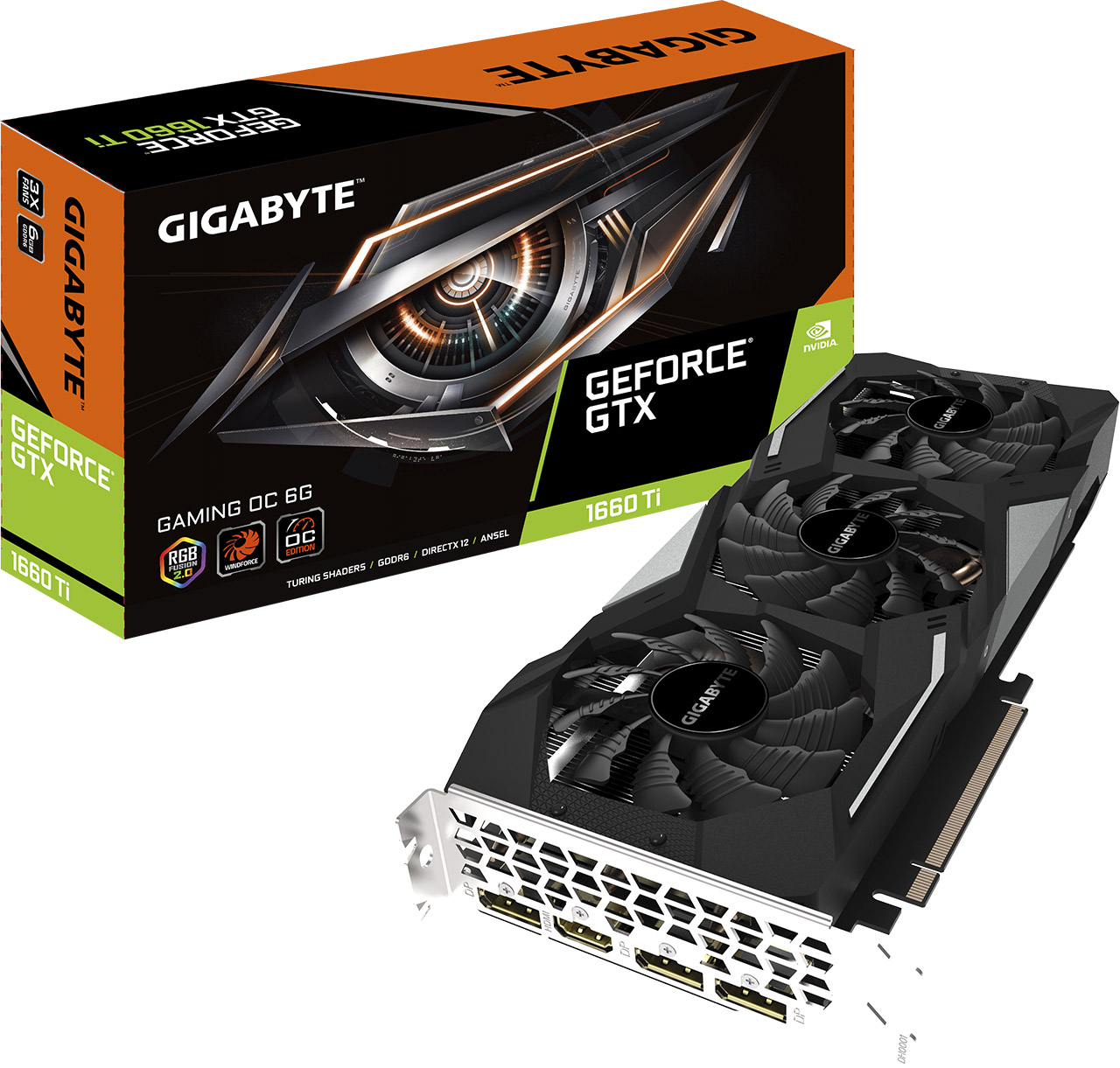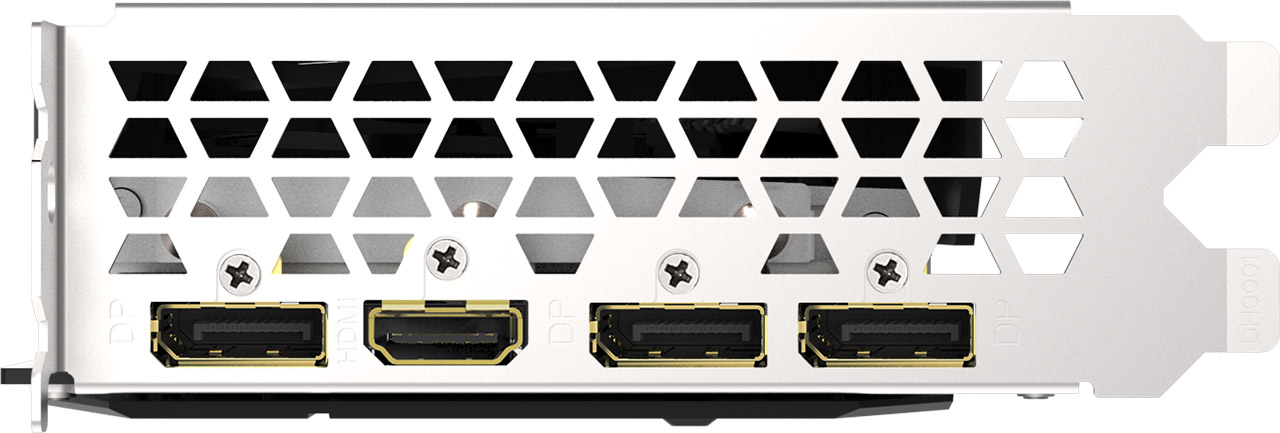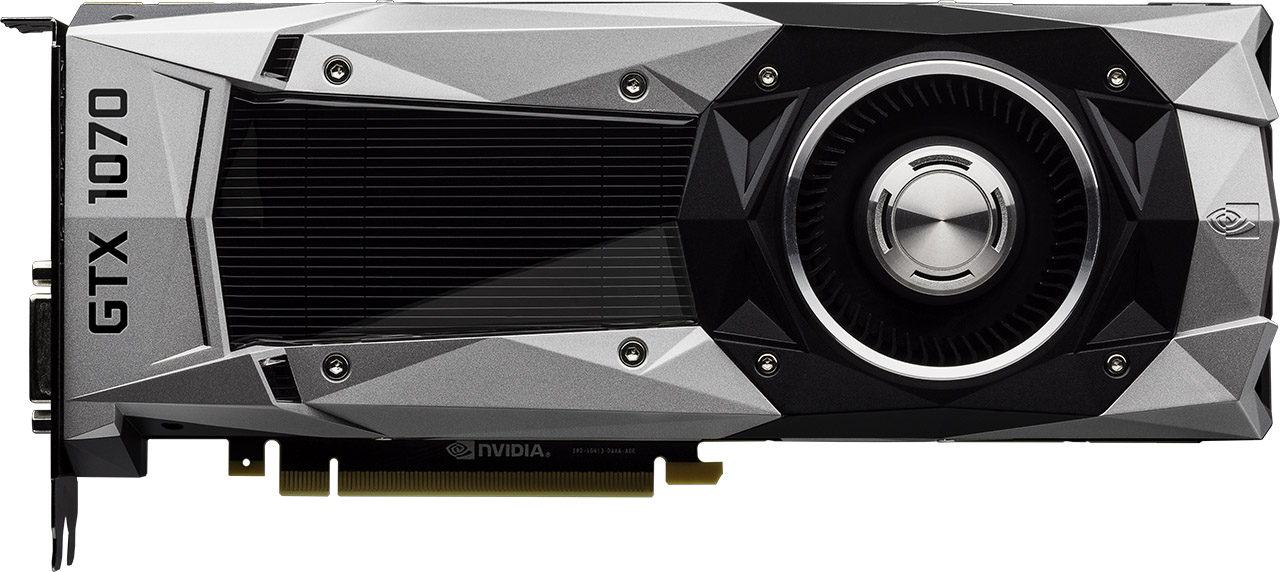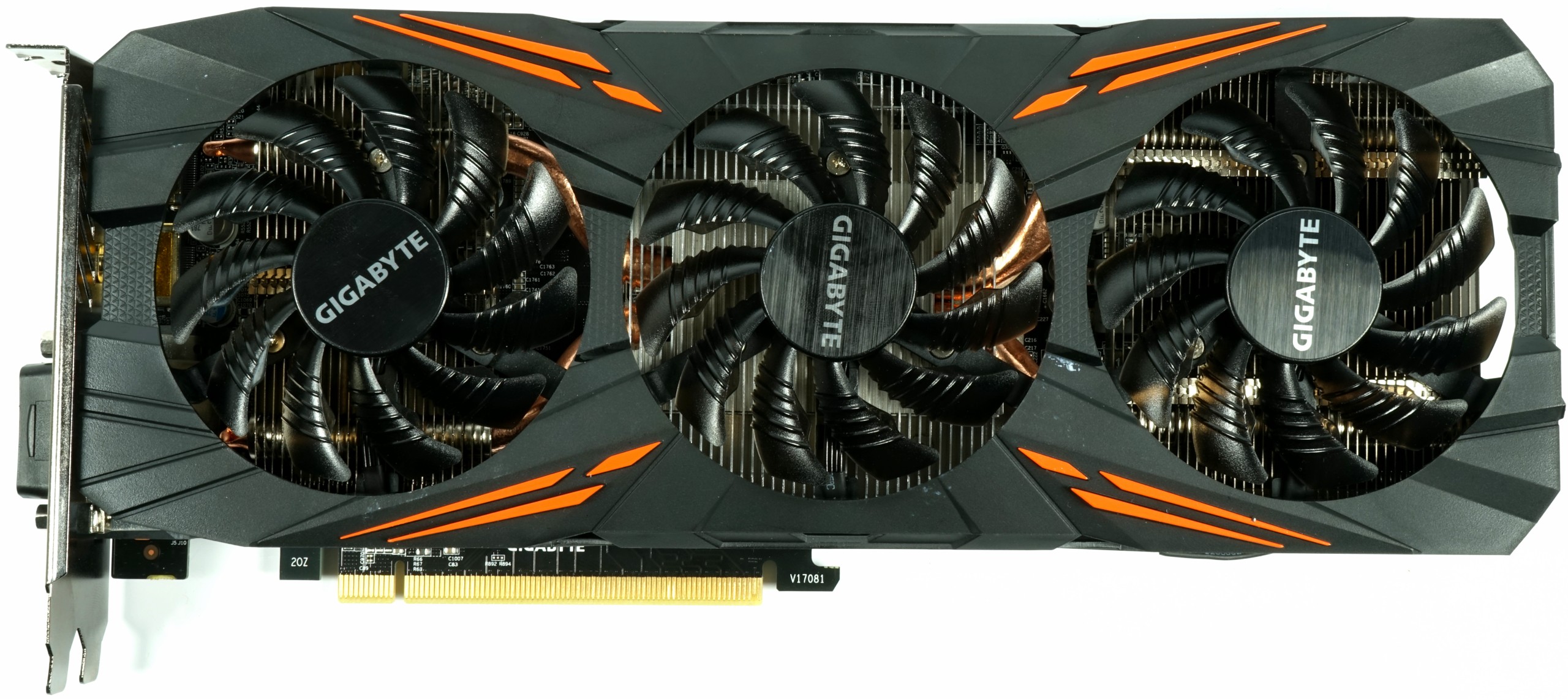Tom's Hardware Verdict
Gigabyte’s GeForce GTX 1660 Ti Gaming OC 6G is the company’s flagship implementation, featuring overbuilt cooling, a generously-high power limit, and RGB lighting. Its price tag puts the Gaming OC 6G in contention with faster graphics cards, though, so we’d like to see it selling for less.
Pros
- +
Big thermal solution for a 120W GPU
- +
Elevated GPU Boost frequency
- +
200W power limit
- +
Operates quietly
- +
Excellent performance at 1920 x 1080
Cons
- -
Similarly-priced Radeon RX Vega 56 is faster
Why you can trust Tom's Hardware
Gigabyte GeForce GTX 1660 Ti Gaming OC 6G Review
Nvidia’s GeForce GTX 1660 Ti was the first Turing-based graphics card lacking the architecture’s signature RT and Tensor cores. Instead, it relied exclusively on performance and efficiency improvements in today’s games to stand up against AMD’s Radeon RX 590 and the previous-generation GeForce GTX 1070. With prices starting at $280, the 1660 Ti certainly offered more value than any of the GeForce RTX cards. But the subsequent introduction of GeForce GTX 1660 showed that gamers could spend even less (as little as $220) and still get great frame rates at 1920 x 1080 with quality settings cranked up.
Now, Gigabyte’s GeForce GTX 1660 Ti Gaming OC 6G challenges us to think in the other direction. Is it worth spending a bit more than the 1660 Ti’s starting price for slightly higher frame rates on high-refresh monitors, over-built cooling, a 200W maximum power limit, and a bit of RGB lighting?
Meet Gigabyte’s GeForce GTX 1660 Ti Gaming OC 6G
Our GeForce GTX 1660 Ti launch review was based on EVGA’s XC Black Gaming model, which represents the 1660 Ti’s base price and 1,770 MHz GPU Boost reference spec. Gigabyte’s Gaming OC 6G, on the other hand, is the company’s highest-end version. Its $300 price tag pays for an 1,860 MHz GPU Boost rating.
Further down the stack, GeForce GTX 1660 Ti Windforce OC 6G sells for $290. A small form factor-oriented Mini ITX OC 6G is listed at $280. And the entry-level OC 6G version sports a similar $280 price.
Aside from a more aggressive GPU Boost frequency, why else would you pay an extra $20 for the Gaming OC 6G? The most obvious reason is its oversized PCB and thermal solution. From the front, Gigabyte’s flagship GeForce GTX 1660 Ti looks a lot like its premium GeForce RTX 2060 Gaming OC Pro 6G and GeForce RTX 2070 Gaming OC 8G. They’re all more than 11” (28cm) long, 4.4” (11.3cm) tall, and 1.5” (3.9cm) thick.
Much of this design’s extra length is attributable to the familiar Windforce 3X cooler, which hangs off the PCB’s back edge by more than 2”. As you might imagine, a thermal solution designed to cope with RTX 2070’s 175W TDP and RTX 2060’s 160W power limit would be more than ample for GTX 1660 Ti’s 120W ceiling. Under the fan shroud, however, Gigabyte does cut costs with a less dense sink that weighs 1.49lb. (674g) instead of the RTX 2060 card’s 1.79lb. (811g). And although both designs employ a multi-part configuration, the 1660 Ti Gaming OC 6G utilizes three heat pipes between them, whereas the RTX 2060 employs four. Those pipes are flattened in the middle and placed directly over Nvidia’s GPU, where they draw heat away before dissipating it through the fin arrays.
On the cooler’s left side, closest to the display outputs, one part of the sink contacts voltage regulation circuitry underneath through thermal pads. On the right side, another piece of the sink doesn’t touch the board at all. It simply helps the middle section keep TU116 and its surrounding memory modules running at the lowest temperature possible.
Get Tom's Hardware's best news and in-depth reviews, straight to your inbox.
Three 80mm fans sit on top of the thermal solution. The outside fans spin counter-clockwise, while the middle fan rotates clockwise. Turbulence is purportedly kept to a minimum, generating less competing airflow from adjacent fans. Then, at idle, the fans stop spinning altogether by virtue of a feature that Gigabyte calls 3D Active Fan. Enthusiasts who prefer to maintain lower idle temperatures can disable 3D Active Fan using downloadable Aorus Engine software. Frankly, the fans make so little noise that we prefer to keep them spinning (even though the semi-passive mode is one of this card’s competitive advantages).
Around the fans, Gigabyte uses plastic gratuitously to form a shroud. Sharp angles and silver accents do look nice, though folds over the card’s top and bottom block air moving through the vertically-oriented fins. A freer-flowing arrangement, particularly above the heat sink, might have helped the already-impressive thermal performance. Instead, that’s where we find this card’s RGB-backlit Gigabyte logo.
Regardless, the company’s relatively light cooler performs admirably. In Metro: Last Light, we observed the Gaming OC 6G consuming about 133W. Although that’s about 9W more than EVGA’s GeForce GTX 1660 Ti XC Black Gaming, Gigabyte’s card ran a couple of degrees cooler. Moreover, it maintained between 1,890 and 1,920 MHz through our run, whereas EVGA's XC Black Gaming demonstrated a range of 1,785 to 1,815 MHz.
Gigabyte’s 1660 Ti Gaming OC 6G sports a plastic backplate. This plate doesn’t do anything for rigidity, and it certainly doesn’t improve the card’s cooling. The plate may, however, help protect the PCB in case something gets dropped on it.
We approve of Gigabyte’s display output choices. Three DisplayPort connectors and a single HDMI interface cover the most common multi-monitor configurations. Down at this level, VirtualLink support isn’t really necessary. And doing away with DVI yields a freer-flowing grille. Unfortunately, the potential benefit of additional airflow is lost since the cooler’s fins move air perpendicular to the bracket.
| Header Cell - Column 0 | Gigabyte GeForce GTX 1660 Ti Gaming OC 6G | GeForce RTX 2060 FE | GeForce GTX 1060 FE | GeForce GTX 1070 FE |
|---|---|---|---|---|
| Architecture (GPU) | Turing (TU116) | Turing (TU106) | Pascal (GP106) | Pascal (GP104) |
| CUDA Cores | 1536 | 1920 | 1280 | 1920 |
| Peak FP32 Compute | 5.7 TFLOPS | 6.45 TLFOPS | 4.4 TFLOPS | 6.5 TFLOPS |
| Tensor Cores | N/A | 240 | N/A | N/A |
| RT Cores | N/A | 30 | N/A | N/A |
| Texture Units | 96 | 120 | 80 | 120 |
| Base Clock Rate | 1500 MHz | 1365 MHz | 1506 MHz | 1506 MHz |
| GPU Boost Rate | 1860 MHz | 1680 MHz | 1708 MHz | 1683 MHz |
| Memory Capacity | 6GB GDDR6 | 6GB GDDR6 | 6GB GDDR5 | 8GB GDDR5 |
| Memory Bus | 192-bit | 192-bit | 192-bit | 256-bit |
| Memory Bandwidth | 288 GB/s | 336 GB/s | 192 GB/s | 256 GB/s |
| ROPs | 48 | 48 | 48 | 64 |
| L2 Cache | 1.5MB | 3MB | 1.5MB | 2MB |
| TDP | 120W | 160W | 120W | 150W |
| Transistor Count | 6.6 billion | 10.8 billion | 4.4 billion | 7.2 billion |
| Die Size | 284 mm² | 445 mm² | 200 mm² | 314 mm² |
| SLI Support | No | No | No | Yes (MIO) |
What lives under the GeForce GTX 1660 Ti Gaming OC 6G’s hood is already well-known. We dissected the TU116 graphics processor in Nvidia GeForce GTX 1660 Ti 6GB Review: Turing Without The RTX. Gigabyte takes the same chip, with 1,536 CUDA cores, and bumps the typical GPU Boost rating up to 1,860 MHz—a 5% increase compared to the 1,770 MHz we tested from EVGA’s XC Black Gaming board.
The Gigabyte card's 6GB of GDDR6 memory moves data at 14 Gb/s, yielding 288 GB/s of aggregate bandwidth on a 192-bit bus.
All of Gigabyte's graphics cards include three years of warranty coverage, and some of them add a fourth year when you register on the company's website. The GeForce GTX 1660 Ti Gaming OC 6G is not one of those special models. In its segment, however, three years of coverage is fairly standard.
How We Tested Gigabyte’s GeForce GTX 1660 Ti Gaming OC 6G
Obviously, GeForce GTX 1660 Ti is more mainstream than the other Turing-based cards we’ve reviewed. As such, our graphics workstation, based on an MSI Z170 Gaming M7 motherboard and Intel Core i7-7700K CPU at 4.2 GHz, is apropos. The processor is complemented by G.Skill’s F4-3000C15Q-16GRR memory kit. Crucial’s MX200 SSD is here, joined by a 1.6TB Intel DC P3700 loaded down with games.
As far as competition goes, the 1660 Ti mostly goes up against GeForce GTX 1070, though we include 1070 Ti as well. Of course, comparisons to GeForce GTX 1060 are inevitable. All of those cards are included in our line-up, along with GeForce RTX 2060 and GeForce RTX 2070. On the AMD side, we’re mostly interested in Radeon RX 590, although Radeon RX Vega 64 and Radeon RX Vega 56 make for interesting additions, too.
Our benchmark selection includes Ashes of the Singularity: Escalation, Battlefield V, Destiny 2, Far Cry 5, Forza Horizon 4, Grand Theft Auto V, Metro: Last Light Redux, Shadow of the Tomb Raider, Tom Clancy’s The Division 2, Tom Clancy’s Ghost Recon Wildlands, The Witcher 3 and Wolfenstein II: The New Colossus.
The testing methodology we're using comes from PresentMon: Performance In DirectX, OpenGL, And Vulkan. In short, these games are evaluated using a combination of OCAT and our own in-house GUI for PresentMon, with logging via GPU-Z.
We're using driver version 430.39 to test Gigabyte’s GeForce GTX 1660 Ti, 418.91 to test EVGA’s competing 1660 Ti, and build 417.54 for everything else. AMD’s cards utilize Crimson Adrenalin 2019 Edition 18.12.3.
MORE: Best Graphics Cards
MORE: Desktop GPU Performance Hierarchy Table
MORE: How to Stress-Test Graphics Cards (Like We Do)
MORE: All Graphics Content
Current page: Gigabyte GeForce GTX 1660 Ti Gaming OC 6G Review
Next Page Gaming at 1920 x 1080









